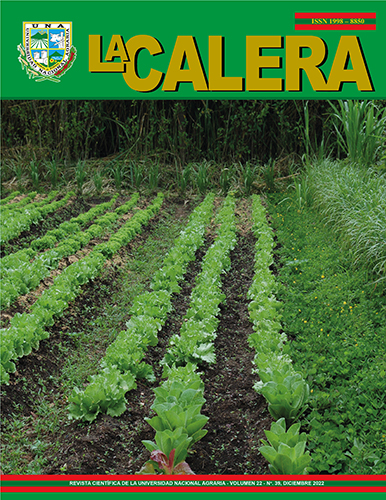Morphophysiological of the genus Rhizophora in the Juan Venado Island Nature Reserve, Pacific of Nicaragua
DOI:
https://doi.org/10.5377/calera.v22i39.15055Keywords:
Rhizophora, morphology, HPLC (High Performance Liquid Chromatography), tocopherolsAbstract
Mangroves are unique ecosystems that grow in brackish waters on the borders of tropical coastlines; represent an enormous scientific, ecological, economic and cultural value. In Nicaragua they represent a great source of economic resources for local populations. The species most affected by logging are Rizophora mangle L, Rhizophora harrisonii Leechm and Rizhophora racemosa G. Mey. Because these species have similar phenotypic characteristics, their separation as a species is difficult. Therefore, aims to this work was to morphophysiologically differentiate the three species of the genus Rhizophora. The foliar samples of the species R. mangle, R. harrisonii and R. racemosa from Juan Venado Island were used. Morphological comparisons and analyzes of pigments and tocopherols were performed. The activity of the photoprotective systems turned out to be highly variable intraspecifically. Total tocopherol content was very different among the three species, with R. racemosa being the highest concentration and R. harrisonii the lowest. The role of g-tocopherol in salinity tolerance could be responsible for the interspecific differences. The different tocopherol composition could be used as a biochemical parameter for interspecific distinction.
Downloads
359
HTML (Español (España)) 34
EPUB (Español (España)) 107
Published
How to Cite
Issue
Section
License
Copyright (c) 2022 Universidad Nacional Agraria

This work is licensed under a Creative Commons Attribution-NonCommercial-ShareAlike 4.0 International License.

